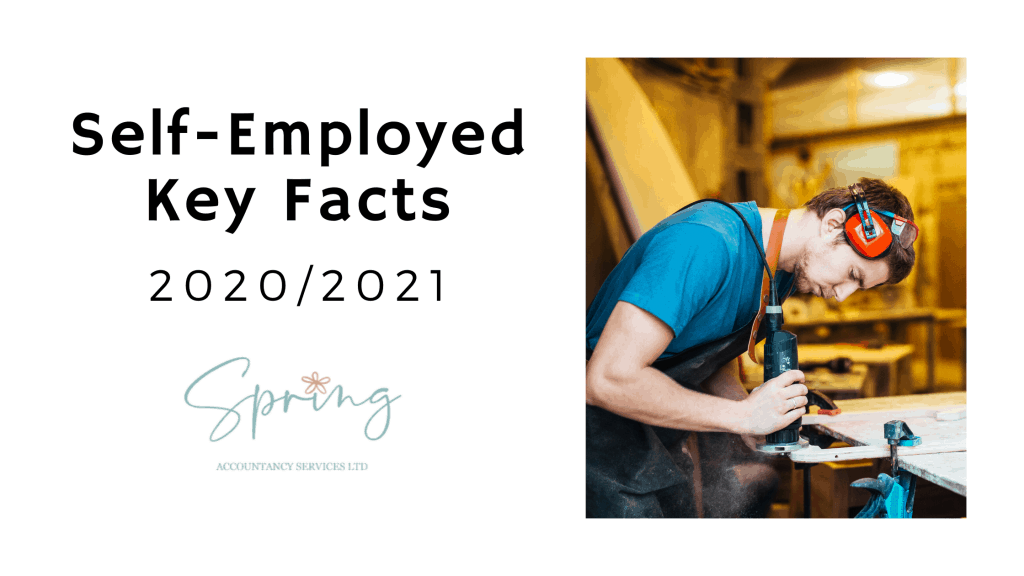Are you Self Employed or a Sole trader?
Self employed or Sole trader? It can be confusing but you can be referred to as either.
If you start a business on your own or work for yourself and you have not incorporated a limited company then this is you.
Partnership – As above but with someone.
Facts
The tax year runs from 6 April 2020 to 5 April 2021 usually referred to as 2020/21 tax year.
The self-assessment tax return including all incoming sources in this period must be submitted by 31 January 2022.
Records must be kept until at least 31 January 2027. (5 years after the submission deadline)
Your business accounts may not necessarily run to 5 April 2021 you may have a different year-end before this date.
The tax rates and allowances are often changed each tax year.
Everyone usually receives a personal allowance which is the amount that you can earn before you start to pay income tax.
The personal allowance for 2020 / 2021 is £12,500.
Self Employed pay the following taxes;
Income tax
This is payable on profits.
The rates of income tax for 2020 / 2021 are:
| Band | Taxable income | Tax rate |
| Personal allowance | Up to £12,500 (may be less depending on income levels) | 0% |
| Basic Rate | £12,501 to £50,000 | 20% |
| Higher rate | £50,001 to £150,000 | 40% |
| Additional rate | Over £150,000 | 45% |
If you live in Scotland or Wales, the tax rates and bands may be different.
National Insurance
Self-employed national insurance is paid differently to employed. A self-employed person may have to pay two types of National Insurance contributions;
- Class 2
If your profits from your self-employed business exceed £6,474 for the year, you will pay Class 2 National Insurance at a rate of £3.05 per week. - Class 4
This is paid if these profits exceed £ 9,500 for the year as follows;
9% on profits between £9,501 and £50,000 plus
2% on profits of over £50,000
Both Class 2 and Class 4 national insurance contributions are calculated on the self-assessment tax return and will be shown in your tax calculation and payable by 31 January 2022.
Other allowances
You may also have tax-free allowances for;
– Trading allowance – This is the first £1,000 of income from self-employment
– Property allowance – This is the first £1,000 of income from property you rent (unless you’re using the Rent-a-room scheme)
IMPORTANT DATES TO ADD TO YOUR DIARY FOR 2020/21
| 5 April 2021 | Tax Year-End |
| 5 October 2021 | Register with HMRC if 2020/21 was your first year trading. |
| 31 January 2022 | Self Assessment tax return online filing deadline |
| 31 January 2022 | Income tax and national insurance balancing payment payable |
| 31 January 2022 | 1st payment on account for 2021/22 |
| 31 July 2022 | 2nd payment on account for 2021/22 |
A payment on account is an amount paid towards the tax due in your current tax year. For more information see our article on payments on account.
To find out more or if you need assistance with your tax return for 2020/2021 then please get in touch.
